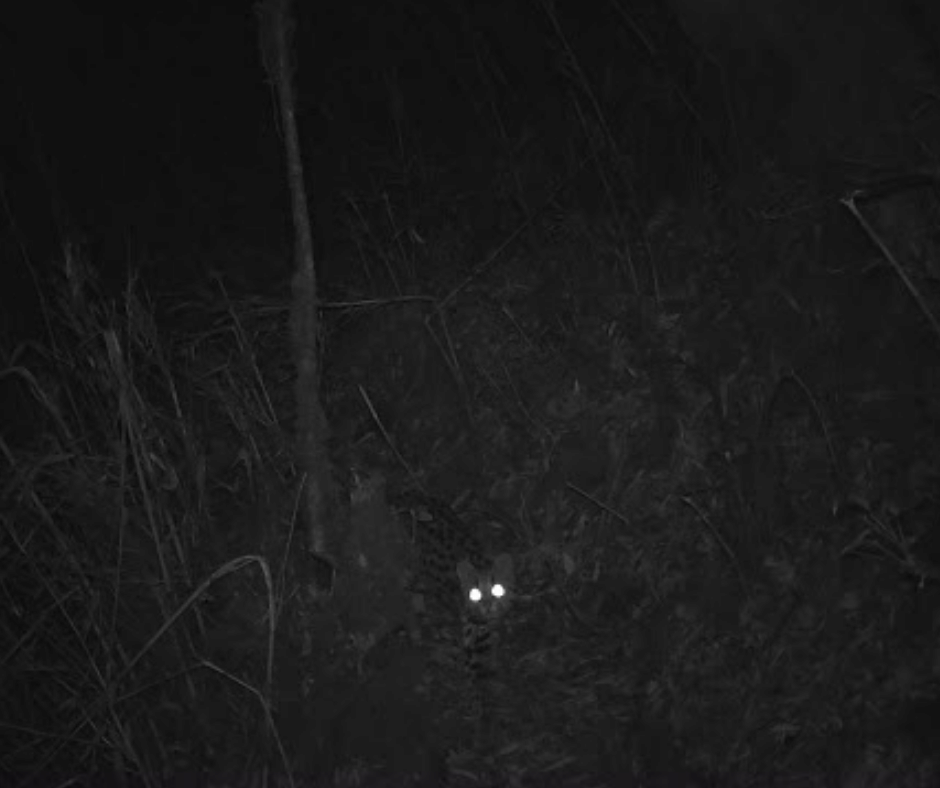Plant A Red Panda Home is our answer to an urgent situation and an uncertain future for red pandas.
Red Panda Network (RPN) uses an integrative approach to conservation that protects habitat through partnerships with community organizations and education and sustainable livelihood programs for local people. But RPN’s Program Coordinator, Sonam Tashi Lama, and other members of our conservation team knew we needed to scale up restoration efforts in order to save the endangered red panda.
“This is an urgent situation," Lama stated.
He is referring to how deforestation in Nepal is looming over the fate of red pandas. Their habitat is already fragmented into 400 small forest patches and continued settlement and agriculture conversions — along with habitat degradation from unsustainable herding practices and harvest of forest resources — are causing the red panda's home to continue to disappear.
"We needed a robust and strategic reforestation initiative,” Lama explains. “This [Plant A Red Panda Home] is our answer.”
This campaign responds by identifying core habitat and population bottleneck locations to plant trees and work with local communities to protect the restored areas. The goal is to connect fragmented forest and protected areas and create a contiguous biological corridor.

Restoration site Jaubari in eastern Nepal. ©RPN
One of these areas is a vast tract of barren, deforested land (approximately 654 hectares of private and public lands) in Jaubari — part of the Chitre-Jaubari-Gairibas belt — located right on the Nepal-India border. Once restored, these forests will link fragmented habitats and be part of a critical forest corridor that connects protected areas in Nepal with Singalila National Park in India.
In 2019, RPN purchased and acquired approximately 18 hectares of private land and in December 20191, we worked with surveyors from the Government of Nepal in completing a field survey, mapping of purchased land, and measurements for protective fencing. We also recently purchased over ten hectares in the same area, contributing to our effort to create habitat connectivity in Ilam district.
But restoring red panda habitat isn’t easy. The process is labor-intensive and success depends on a number of factors, including sapling survival and fence installation to protect the newly restored land from livestock and human encroachment.
Fortunately, RPN is teaming up with the dedicated people of our local partner NGO in Ilam district, Mountain Organization Nepal (MOON), who will be executing the project.
All of the purchased land in Jaubari will soon become part of a Community Forest where local people will manage the land and restoration activities.

Leopard cat in Jaubari. © RPN

Bamboo growth at the restoration site in Jaubari. ©Ngima Phinju Sherpa/RPN
MOON is an example of how local communities are committing to red panda conservation. And this is key to our success. Thanks to local people, as well as RPN supporters and partners all over the world, we planted nearly 15,000 trees in Santapur Community Forest and 8,000 trees in the Jaubari restoration area of Ilam district in June-July this year. We also built a new Forest Conservation Nursery in Panchthar district which will produce 20,000 native plants and trees including Umbrella tree, Himalayan whitebeam, wild kiwifruit and Himalayan yew!
We now have five Forest Conservation Nurseries (3 in Taplejung, 1 in Panchthar and Ilam district) that can produce more than 125,000 native saplings! Also, three more nurseries will be started by the end of 2020 in eastern and western Nepal.
The nurseries provide sustainable sources of non-timber forest products (NTFPs), medicinal and aromatic plants, and fodder species — as well as income for local people — which helps to reduce pressure on forest resources. Red panda food and shelter species will also be cultivated and used for habitat restoration.

Lama with signs of red panda in the restored area. © Ngima Phinju Sherpa/RPN
Lama’s role is to oversee planting, nurseries, and all of the activities for the national restoration campaign. It’s a big job but he knows how vital it is to not just the red panda: “Like all of our community-based programs, Plant A Red Panda Home supports sustainable livelihoods for the local people.”
In Jaubari, it’s not just wildlife that is benefiting from reforestation. People like Thupten Bhutia and his community are experiencing sustainable livelihoods first-hand. He shares, “We now have access to grasses for our livestock, thanks to their restoration program, which provides alternative income opportunities to people of the area.”
Pema Pradhan is another local person in Ilam district who has witnessed the impacts of our community-based restoration initiative. She shares her testimony in a video below which translates to: "Namaste! My name is Pema Pradhan. It has been three years since we planted trees here and we can already see the changes. The forest restoration has provided income generation opportunities for us by employing us for 15 days in a month."
Since 2019, Plant A Red Panda Home has resulted in approximately 1,000 days of employment for the people who live among the pandas in eastern Nepal's Ilam district.
Important milestones like this are made possible by the support of our members and conservation partners. Thanks to you, we have reached our initial goal of $70,000! And we are pleased to announce that John Ball Zoo, Zoo Boise, Cleveland Metroparks Zoo, Pueblo Zoo, Topeka Zoo and Conservation Center, and Mesker Park Zoo and Botanic Garden have just joined the First Panda Challenge and are now matching donations dollar-for-dollar up to $50,000!
Donate now to help us combat deforestation by reforesting 50 more hectares of red panda habitat with 100,000 trees! With your help, we will be able to restore places that are clearcut, degraded and uninhabitable for local wildlife. Just like here, in the Chitre-Jaubari-Gairibas belt, red pandas and other threatened species will be able to return to their reforested homes all over Nepal.
Together, we can create a brighter future for the last of the first panda.

